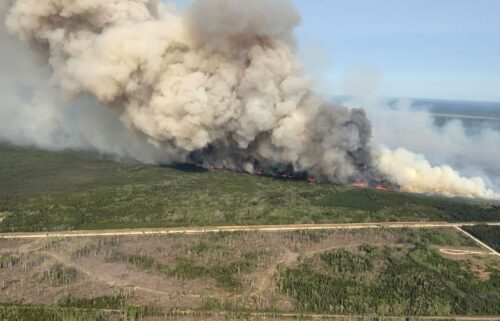‘It’s way too early’: Forecasters surprised by speed and severity of Orange County fire

'It's way too early': Forecasters surprised by speed and severity of Orange County fire.
By Angela Fritz, Chad Myers and Ella Nilsen, CNN
Meteorologists in California told CNN on Thursday they were surprised at how fast Orange County’s devastating brush fire moved overnight, as it tore through the city of Laguna Niguel and destroyed at least 20 multimillion-dollar homes and mansions.
“It’s way too early” for a fire like that in Southern California, said Bill South, a meteorologist at the National Weather Service in Hanford. “This has the potential to be a very bad fire season. And as everyone knows, we’re in a drought here throughout the entire state of California.”
Extreme drought expanded from covering 40% of the state to 60% of the state in the past week alone, the US Drought Monitor reported Thursday, and January to April were the driest first four months on record for California.
Winter and spring are typically the wet seasons for California, but this year has been anything but — especially in the southern half of the state. Los Angeles and Palm Springs are off to their third- and second-driest start to a year, respectively. Records in this region go back more than 70 years.
“We haven’t seen a drop of rain,” South said.
Without the much-needed rain, vegetation in Orange County has dried out to a crisp, which fueled Wednesday night’s fast-moving Coastal Fire. Meteorologists told CNN that the winds weren’t even particularly strong.
“I could have called it breezy,” South said. “But it wasn’t the typical, Santa Ana situation where they would get the screaming easterly winds like they usually do, that causes fires to rapidly spread in Southern California.”
In fact, the winds that helped spread the fire were blowing in from the Pacific Ocean, which means they were cool and humid.
“The humidity was high, which isn’t necessarily optimal to get that kind of burning,” said Greg Martin, a meteorologist at NWS San Diego. “I was really surprised when I saw the smoke plume yesterday evening on my commute and wondered what was burning.
“That was not what I would have thought would be an ideal situation, and yet we had a substantial fire.”
Scientists recently reported the West’s multi-year megadrought is the most extreme in 1,200 years, and has been made 72% worse by human-caused climate change. Reservoirs in California, Nevada and Arizona — sources of water for tens of millions of people — are draining rapidly after a dry winter.
Wildfires have historically peaked in the late summer and fall in California. But now, instead of a fire season, officials in are increasingly pointing to a “fire year,” where wildfires occur in any month.
“We’ve stopped talking about fire seasons,” Issac Sanchez, Cal Fire’s battalion chief of communications, told CNN. “The implication of that term is if we’re in fire season there’s a time of year when we’re not in fire season. That’s just not the case in California anymore.”
While Sanchez said Wednesday’s fire is “historically speaking, unusual,” it’s not even the first unusual fire this year. In January, the Colorado Fire burned 687 acres in Monterey County.
“It’s a result of climate change, it’s a result of the drought we’re seeing,” Sanchez said. “The Coastal Fire is a graphic example that you don’t need thousands of acres burned to impact you.”
Sanchez added unless the long-standing drought and dry conditions in the state improve — and do so in a sustained way for years — California fire crews will continue to prepare for the worst-case scenario.
“We’re preparing for the worst,” he said. “We have to be prepared for the worst, there is no hoping things get better.”
As firefighters battled the blaze early Thursday morning, Orange County Fire Chief Brian Fennessy pointed to how different this was than what they’ve encountered in the past.
“The fuel beds in this county, throughout Southern California, throughout the West, are so dry that a fire like this is going to be more commonplace,” he said. “Five years ago, 10 years ago, a fire like this would’ve likely been stopped very small.”
The-CNN-Wire
™ & © 2022 Cable News Network, Inc., a WarnerMedia Company. All rights reserved.

